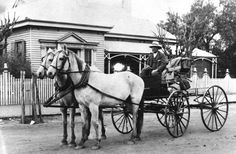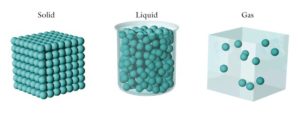With spring here and warm summer days approaching, many motorists are beginning to hear that nagging voice inside saying, “I guess I need to get my car into the shop for some ‘spring cleaning.'” Of course, that voice can be right or wrong depending on what “it” means be spring cleaning. 🙂 One item on our mental lists for spring cleaning is a coolant/refrigerant check. If that sounds strange, then you might already know the difference between coolant and refrigerant. If not, then please continue reading, as I hope to shed some light on the differences between them and what that means for you.
Rules-of-thumb regarding autos have been around since we first decided to power our carriages with motors instead of horses. Of course, our carriages have become more complicated since putting motors in them. With complexity, there’s the opportunity for confusion, so sometimes the rules of thumb are correct, other times, not so much. What about the rules for springtime maintenance?

The heritage of automobiles runs deep… and side-by-side.
The distinction
Seasonally, there are quite a few people who ask us about engine coolant and air conditioning checks. A subset of those people seems confused as to the difference between them. Perhaps you’re one of them. Let’s take a 10,000-feet (cursory) look at their differences, then make some observations:
- Air conditioning refrigerant transfers heat from the cabin to the condenser.
- Engine coolant (or antifreeze, which is part of the coolant mix) does what its name suggests: it transfers heat from the engine to somewhere else (the radiator).
- Engine coolant uses water to transfer the heat produced from the engine combustion (burning fuel) to air rushing through the radiator under the hood (it also transfers heat from the engine to the cabin when you turn the heating on).

- The water is mixed with antifreeze to keep the water from freezing when the weather is cold (otherwise the engine block would crack), and keep it from boiling. Thus, engine coolant is supposed to stay in liquid form.
- Air conditioning refrigerant is used to transfer heat from the car’s cabin to outside the vehicle through the properties of evaporation.
- Throughout the air conditioning cycle, refrigerant will switch between a liquid and vapor state.
- Fun fact: the boiling points are designed in different directions; antifreeze has a high boiling point, where refrigerant has a really, really low boiling point.
The difference: how it relates to you
Both systems harness aspects of heat transfer to affect the desired outcome. Both are involved in the heating, ventilation, and air conditioning system (HVAC) of a vehicle. It’s understandable if one would think that the two systems are the same if they’ve just heard “a little here and there,” especially since they’re interrelated for HVAC purposes. The difference between coolant and refrigerant maintenance, though, is significant.
Engine coolant (antifreeze)
- In addition to keeping the water from freezing, antifreeze also contains rust inhibitors. These eventually wear out, so to speak, and are no longer effective at stopping rust and corrosion – which is a serious concern for engine cooling systems.
- Because the rust inhibitors do “wear out,” it is necessary to replace the antifreeze and water from time to time.
- The engine coolant needs preventive maintenance, including radiator cap and antifreeze replacement.
Refrigerant (Freon)
- The heart of an air conditioning system is the compressor. It does a lot of moving internally, which needs lubrication. The air conditioning system, then, contains AC compressor oil as well as refrigerant. This protects it against rust, which means you don’t need rust inhibitors in refrigerant (the conditions of the two systems are very different, too).
- If the refrigerant and/or compressor oil leaks out, then you should have more added. But this isn’t preventive maintenance. It’s something that requires a leak repair so you won’t lose the oil/refrigerant you just added.
- The refrigerant itself does not need preventive maintenance. There are things you can do to maintain the HVAC system in general, like keeping leaves out of your car’s cowling, performing evaporator cleanings, etc., but these aren’t directly affecting the refrigerant.
Some general take-aways
- An engine coolant flush will not help your AC blow colder.
- The temperature-drop between the outside air and the air in your car should be about 30 degrees Fahrenheit. Don’t have a thermometer? Don’t worry, we can take a look for you.
- We would be remiss to not tell you about our maintenance priority list. What this list does is gives you the most cost-effective maintenance prioritized, top-to-bottom, on a list. If you are curious about vehicle maintenance or want to get started with taking care of it, we highly recommend this resource.
- To learn about what makes a good cooling system flush, visit our cooling system flush page.
I hope that after reading this article you better understand the difference between coolant and refrigerant, and what it means for you. While we’re all champing at the bit for better weather here in Chesapeake, let’s be ready when it gets here.
This post was last edited on by .

